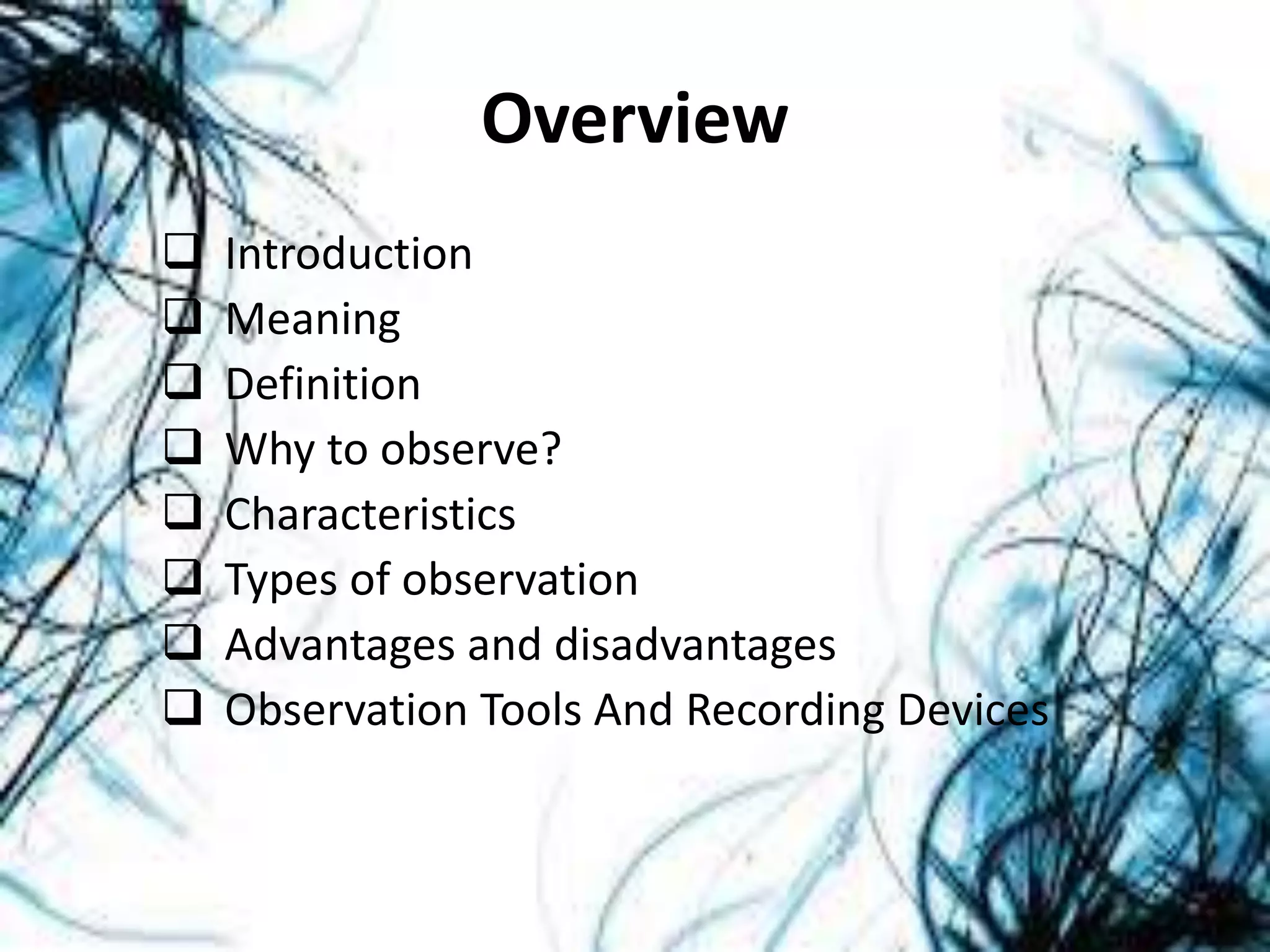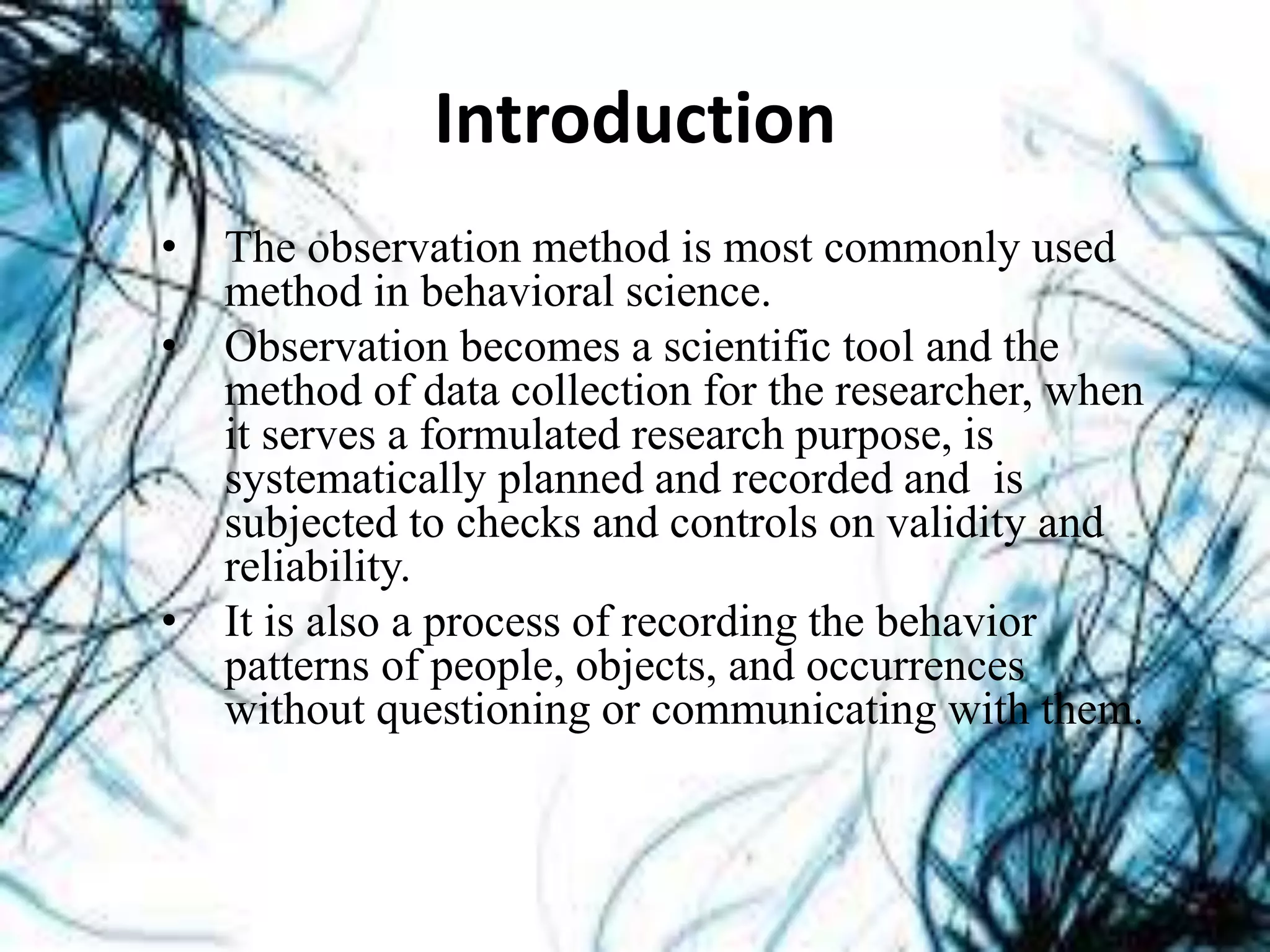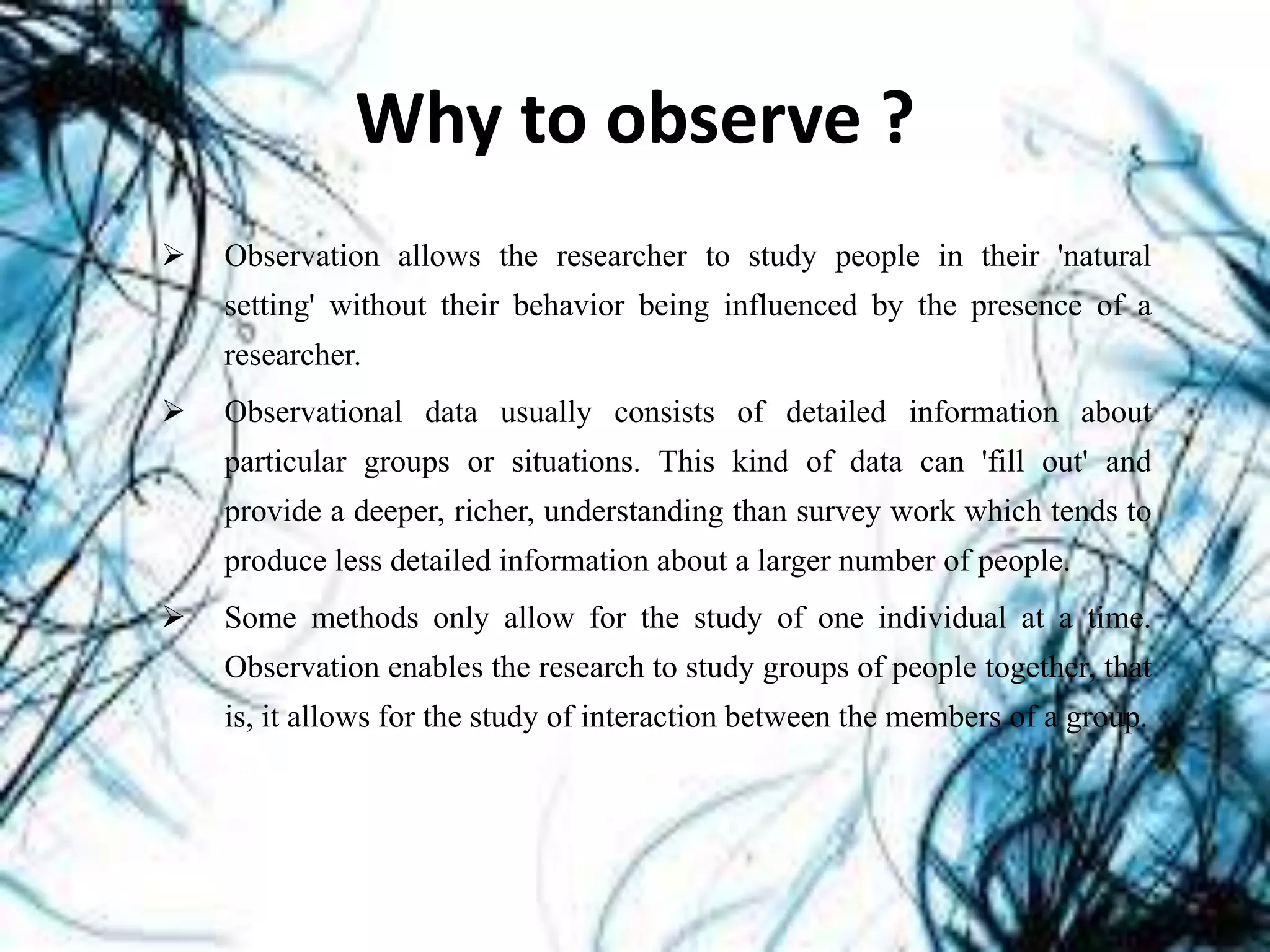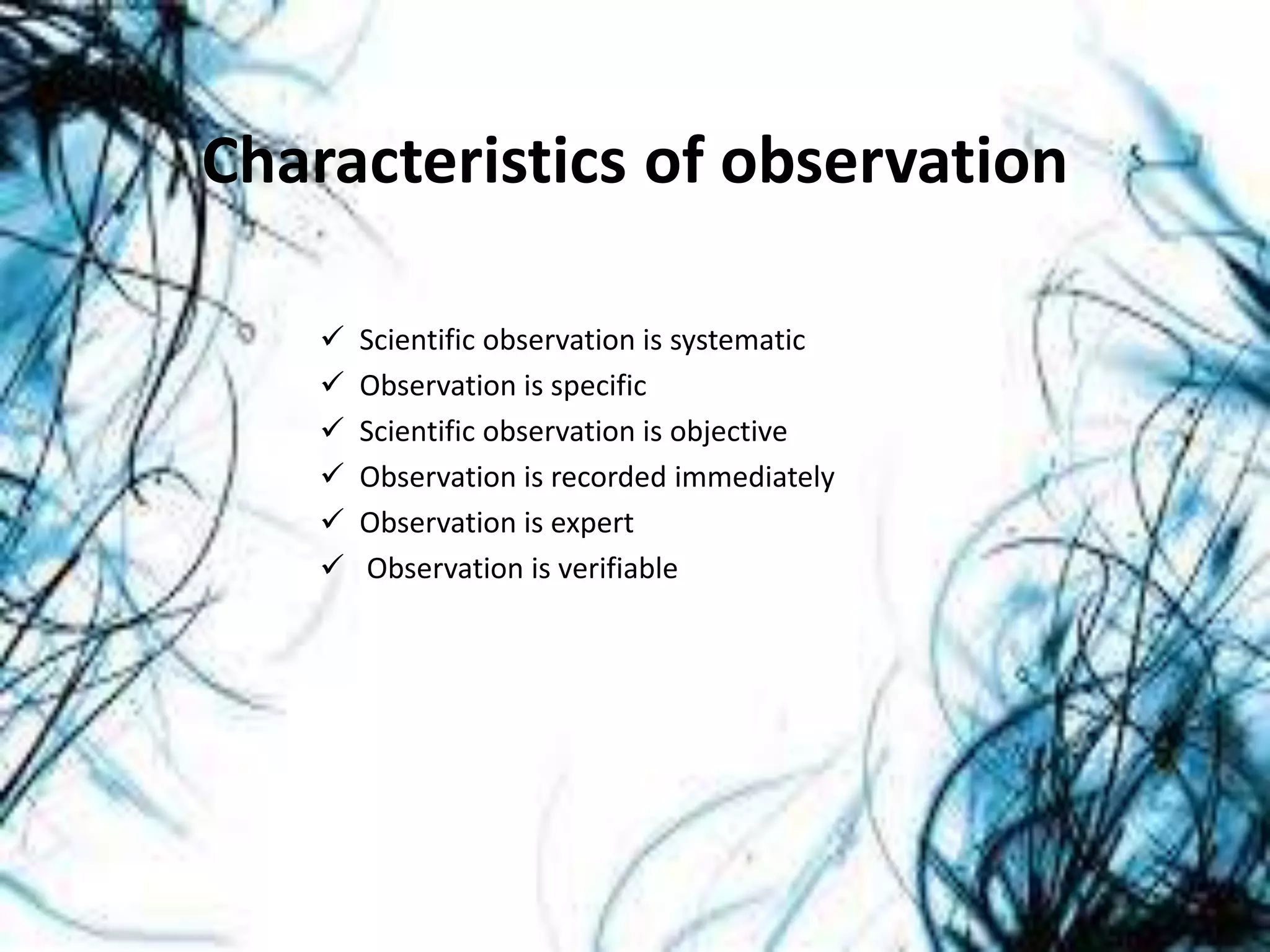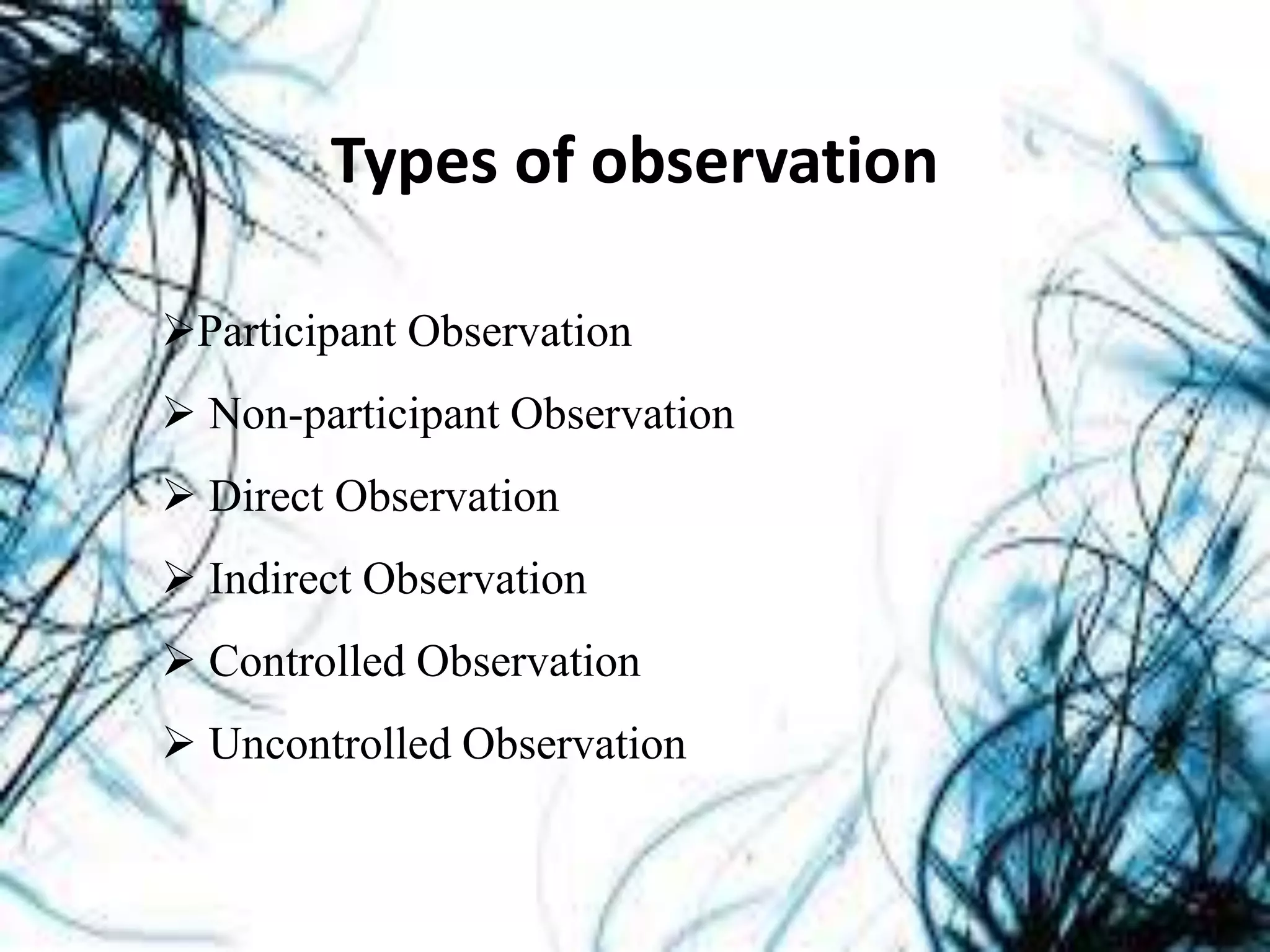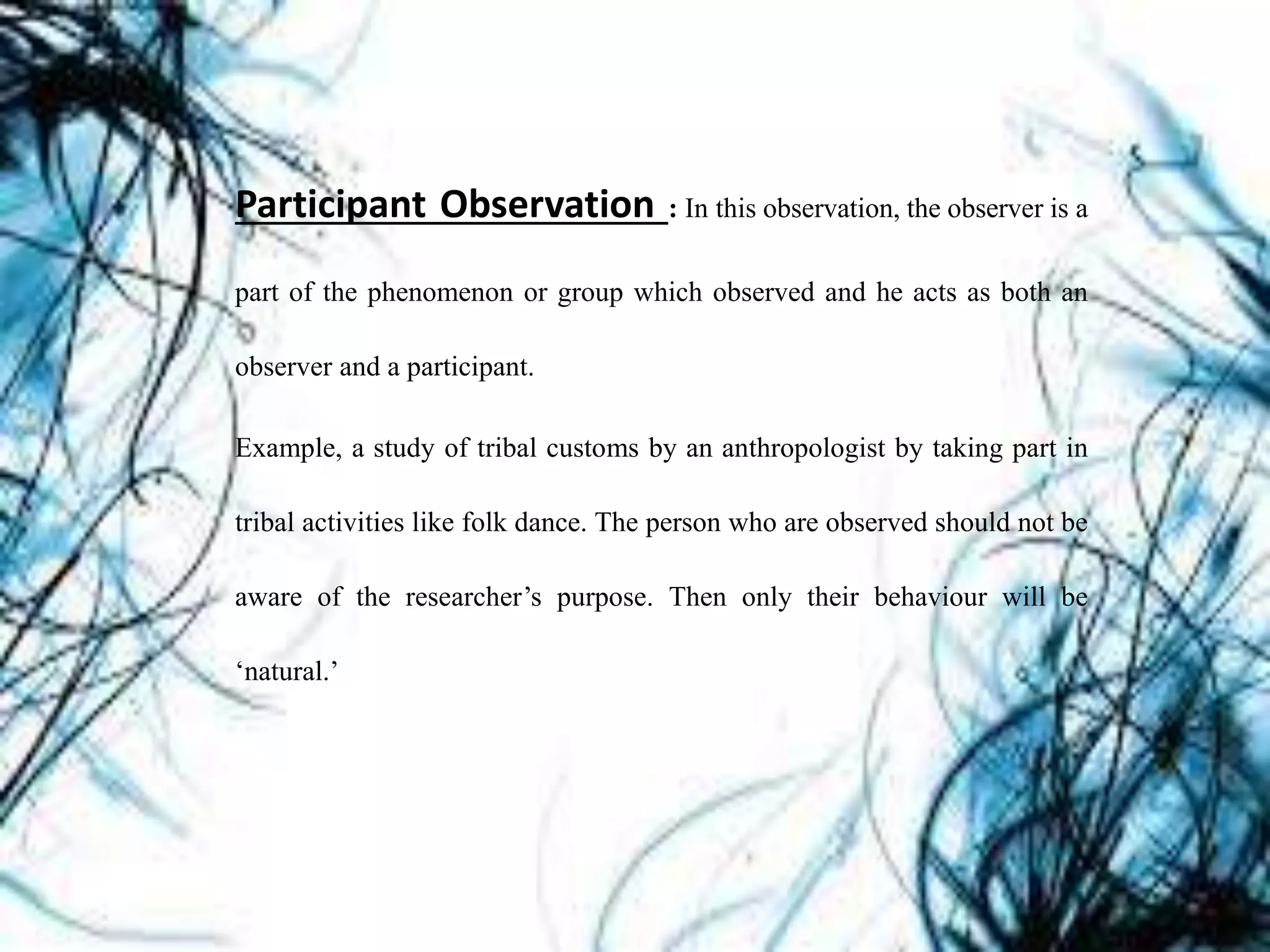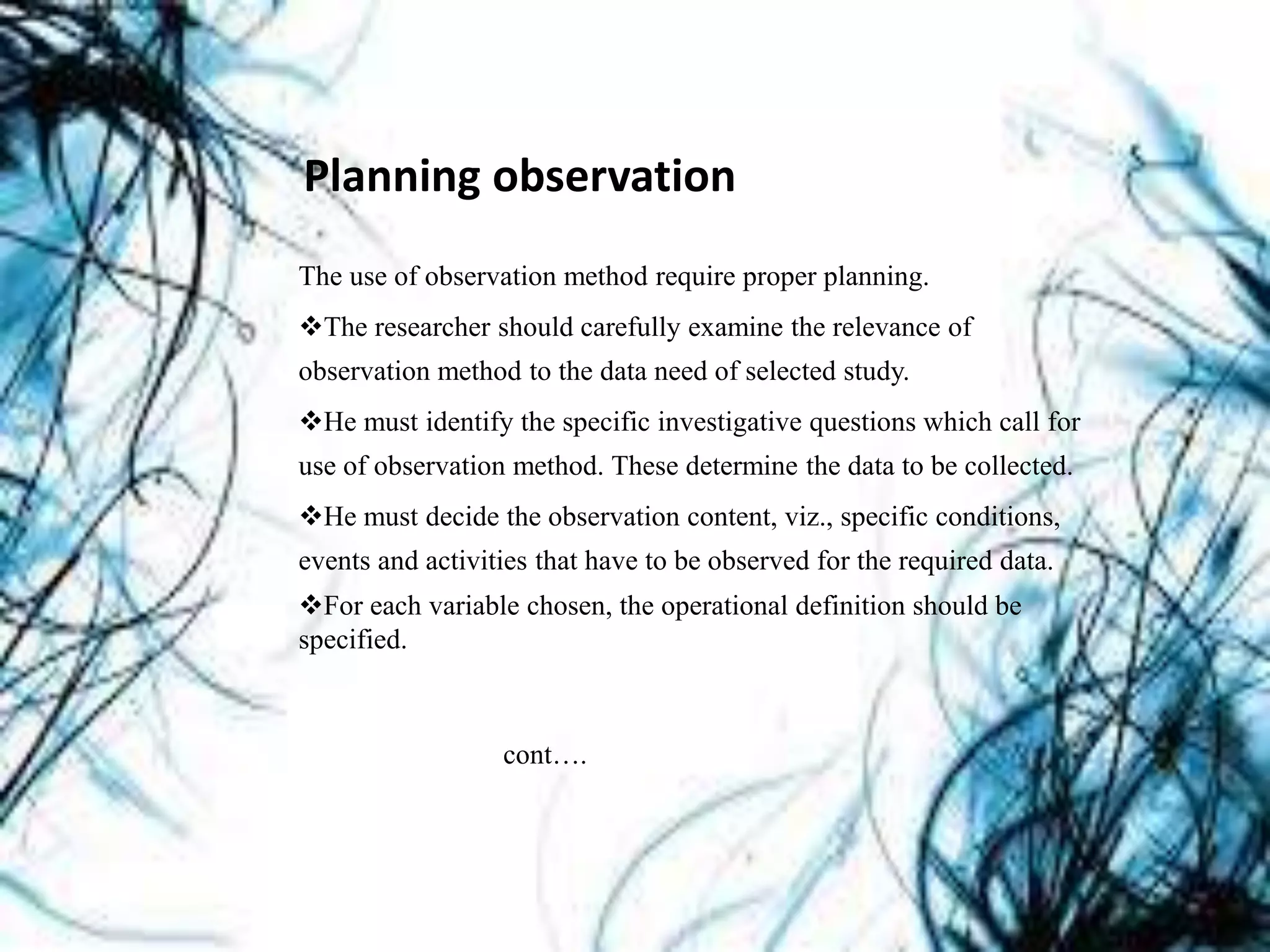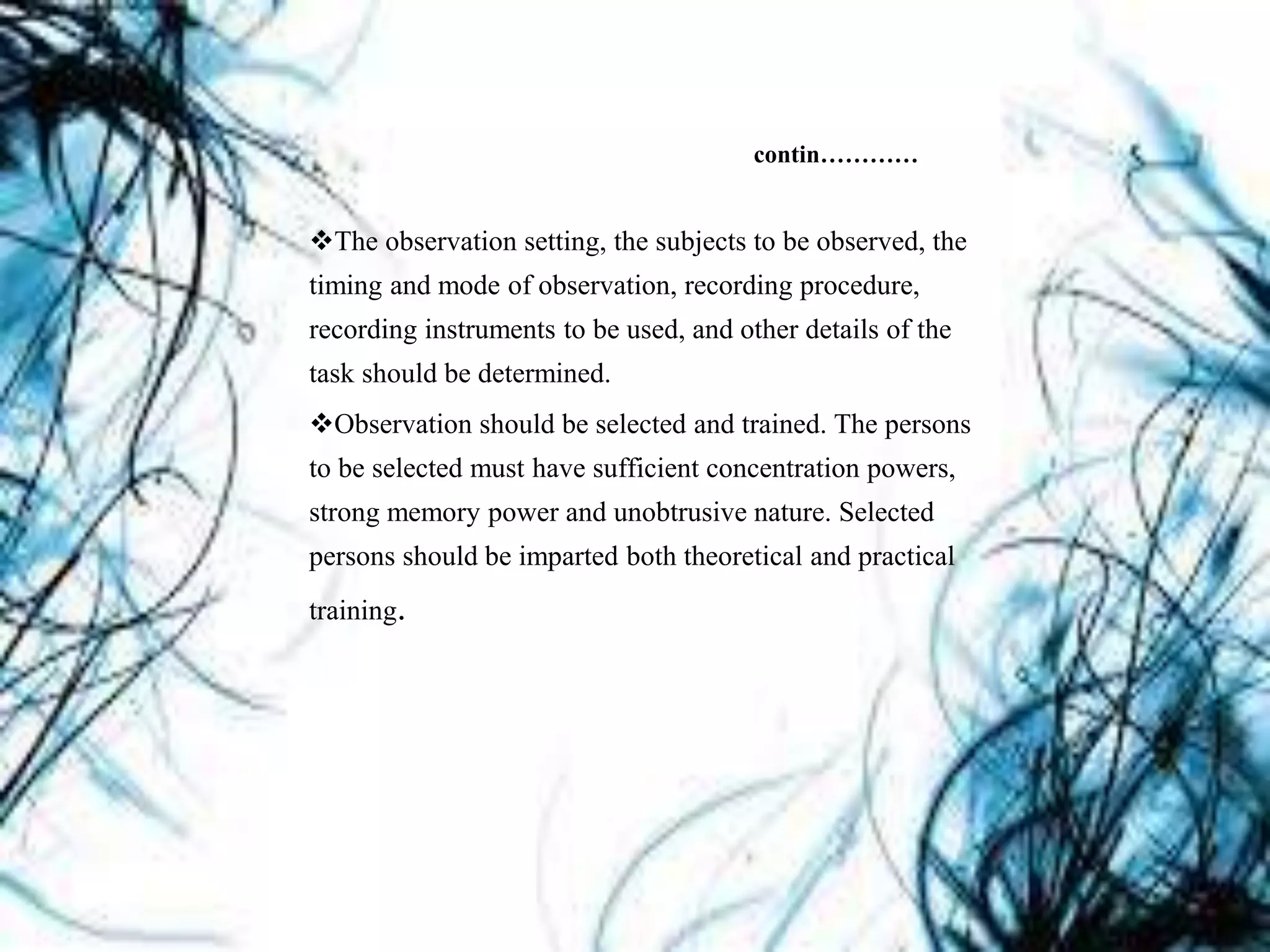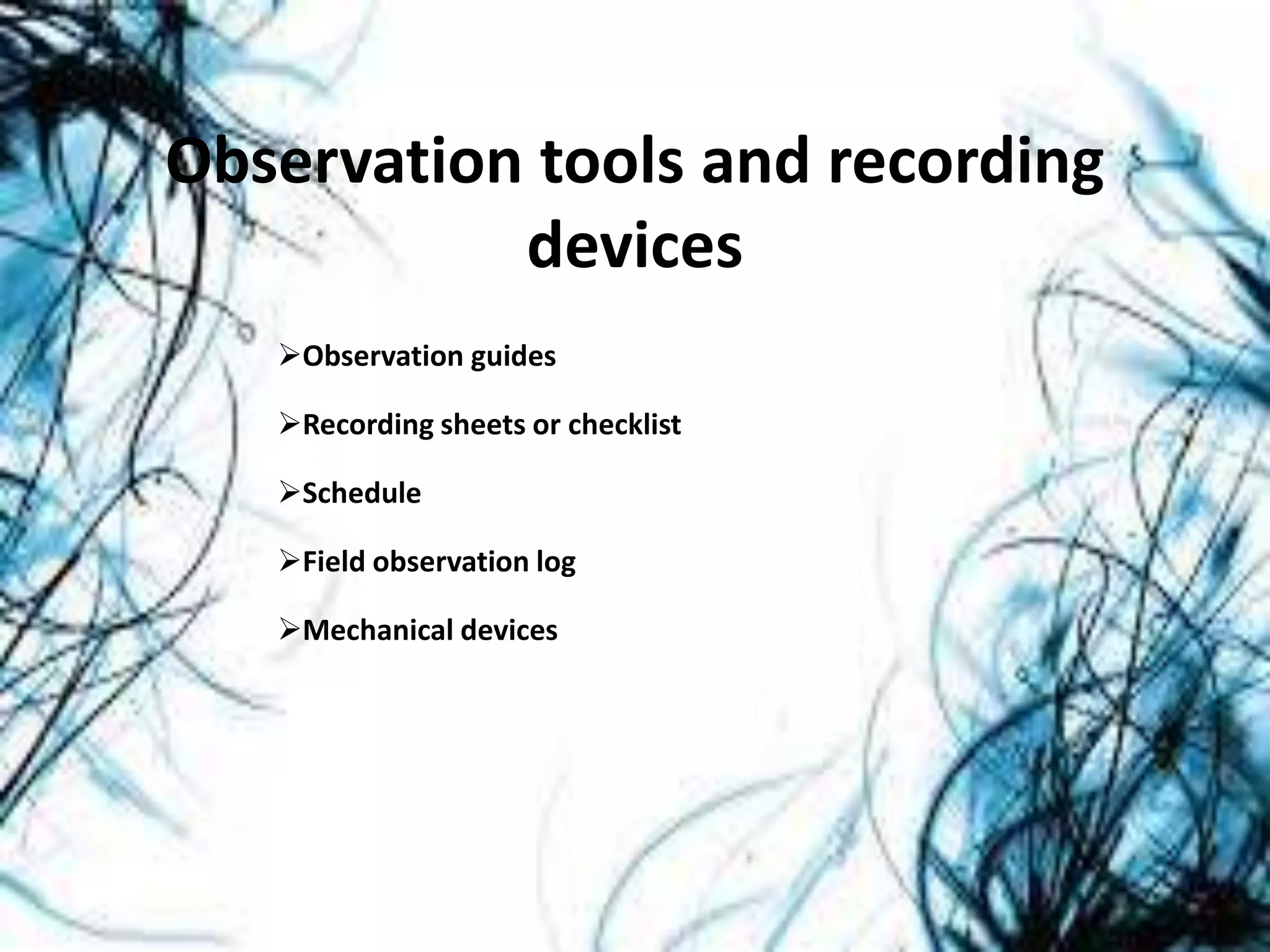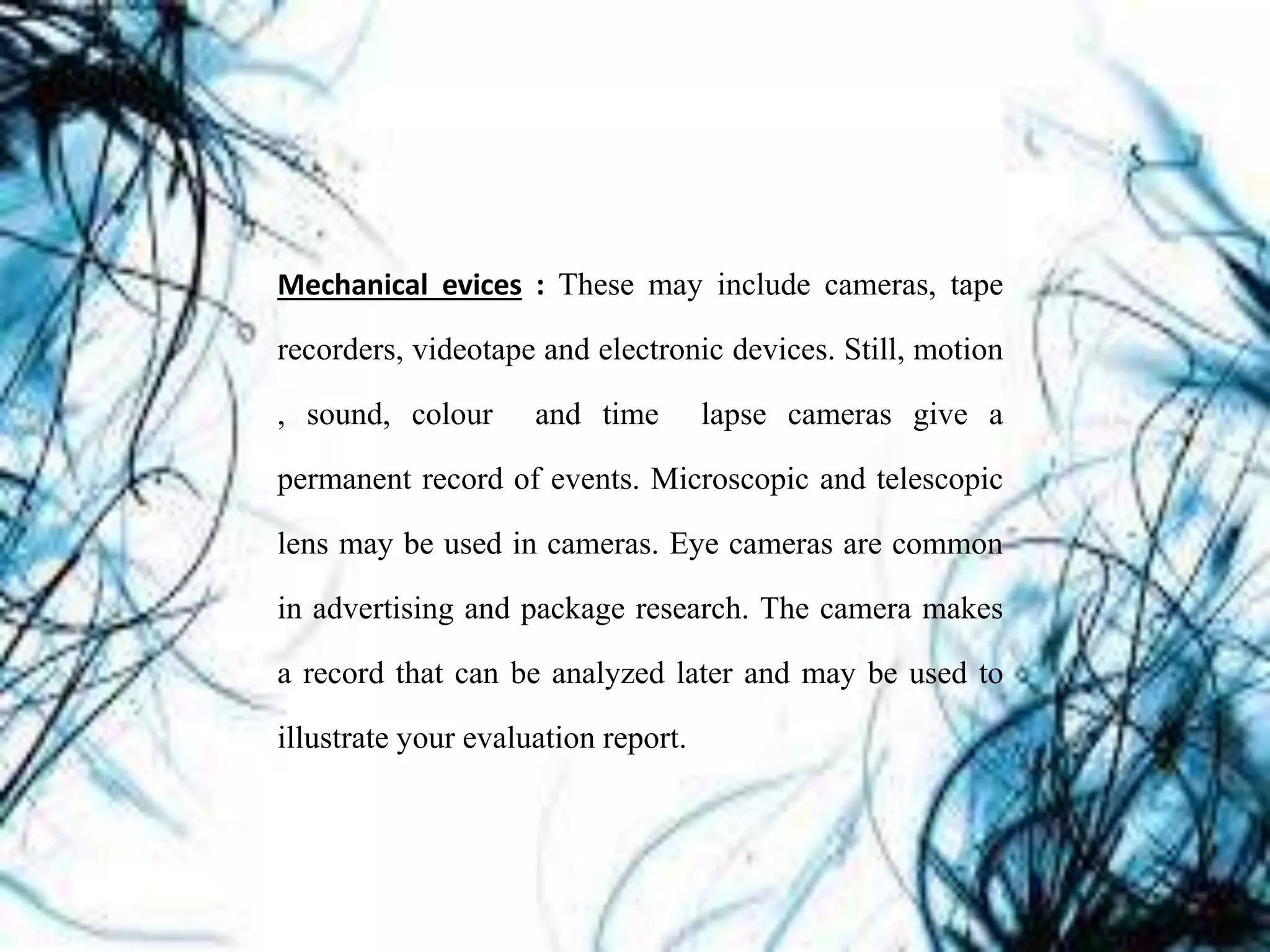Observation is a systematic method of data collection where a researcher directly watches and records behaviors, actions, and other phenomena without participating. It involves planning what to observe, recording observations using tools like checklists or logs, and analyzing the data. Some key advantages are that it occurs in natural settings and provides objective data on behaviors, while disadvantages include potential subjectivity and the risk of altering behaviors under observation. Common types of observation include participant, non-participant, direct, and indirect observation.


